#THE HISTORY mid century furniture melbourne
Explore tagged Tumblr posts
Text
Melbourne's Vintage Furniture Gems: Add Charm to Your Space
In a world that increasingly embraces fast-paced trends and mass production, vintage furniture offers a refreshing alternative. It's more than just an aesthetic choice—it represents a connection to history, craftsmanship, and timeless style. Melbourne, a city known for its eclectic and artistic spirit, is a treasure trove of vintage pieces that can transform any space. Whether you're furnishing a new home or seeking to add a special touch to your existing décor, Melbourne's vintage furniture scene has something to offer every taste and style.
The Appeal of Vintage and Antique Furniture
Both vintage and antique furniture have experienced a resurgence in popularity, not just for their undeniable charm but for their lasting quality. Unlike mass-produced pieces, vintage furniture is often made from solid materials such as hardwood, designed to last for generations. These pieces are frequently handcrafted, meaning each item is unique, bearing the hallmark of a time when furniture was built to endure. Whether it's a mid-century modern sofa or an ornate Victorian sideboard, these items have stood the test of time.
When adding vintage furniture to your home, you're not just selecting a functional piece; you're integrating a work of art into your everyday life. Antique furniture can become the focal point of a room, a conversation starter, or simply a comforting reminder of the elegance of past eras. It's easy to see why so many Melburnians are drawn to these timeless treasures, as they offer a level of craftsmanship and durability that is rarely found in contemporary pieces.
How to Find the Perfect Vintage Furniture in Melbourne
Finding the perfect vintage furniture in Melbourne is an adventure in itself. The city is filled with a variety of boutiques, antique shops, and markets where you can discover hidden gems. The key is to know where to look and what to look for. Many furniture hunters prefer to start their search in Melbourne's inner-city suburbs, where shops like Brunswick, Fitzroy, and Collingwood offer a wide range of vintage and antique items. Each piece is carefully curated, and browsing through these stores feels like walking through history.
There’s also the appeal of local markets, such as Camberwell Sunday Market, where you can stumble across unique finds, often at more affordable prices than in boutique stores. For those who enjoy a DIY project, Melbourne’s second-hand shops offer plenty of opportunities to find a piece that can be restored or repurposed to match your personal style.
Why Vintage Furniture is a Sustainable Choice
One of the most significant advantages of choosing vintage furniture is sustainability. In a time when environmental consciousness is at the forefront of many decisions, opting for vintage is an eco-friendly way to furnish your home. Unlike newly manufactured items, which often require significant resources to produce and may contribute to deforestation or carbon emissions, vintage pieces are already in existence, meaning their environmental impact has already been made.
By choosing vintage furniture, you're reducing the demand for new products, contributing to less waste, and helping to extend the lifespan of items that might otherwise be discarded. This is a practical way to make more sustainable choices in your home while still achieving a stylish and sophisticated look. Moreover, many vintage furniture pieces can be upcycled or restored, allowing for further customization and reducing the need for new materials.
Mixing Vintage with Modern Décor
While some may assume that vintage furniture only works in traditionally styled homes, it’s quite the opposite. Mixing vintage with modern décor can create a dynamic and interesting living space. The juxtaposition of sleek, contemporary lines with the warmth and character of vintage furniture can result in a balanced and visually appealing interior.
For example, a modern living room can be enhanced by adding a vintage armchair or an antique mirror. These pieces act as focal points that break the monotony of newer designs, creating a space that feels lived-in and personalized. Vintage pieces have the power to tell a story, adding layers of texture and history to your home.
Caring for Your Vintage Furniture
Once you've found that perfect vintage or antique furniture, it's essential to know how to care for it properly. Many of these items are made from materials that require special attention to maintain their quality over time. For example, wooden furniture may need regular polishing, while fabrics on vintage sofas or chairs may require more delicate cleaning methods.
Leather, a common material in vintage furniture, should be conditioned periodically to prevent cracking and maintain its softness. Similarly, if your vintage item includes upholstery, it’s worth considering professional cleaning to preserve its original look and feel.
Restoration is another option for vintage furniture, especially if you’ve purchased a piece that needs some TLC. Restoring an item can breathe new life into it without sacrificing its original charm. However, it’s important to approach restoration carefully, especially with antiques, to ensure that the piece retains its value and historical significance.
Creating a Unique Home with Vintage Pieces
Melbourne is a city known for its creative flair, and nothing says "individuality" like a well-curated vintage collection. Whether you're drawn to the industrial designs of the mid-20th century or the ornate elegance of the Victorian era, vintage furniture allows you to express your personality and taste in a way that mass-produced items cannot.
One of the great joys of incorporating vintage furniture into your home is the hunt itself. Each piece comes with its own story, and finding that perfect item can feel like discovering a hidden gem. The mix of history, craftsmanship, and personal meaning is what makes vintage furniture so special—and why it continues to be such a beloved choice in Melbourne's vibrant design community.
In the end, choosing vintage furniture is more than just a design decision—it's about creating a home that reflects who you are. By integrating vintage pieces into your space, you’re adding layers of meaning, history, and charm that make your home feel truly unique.
0 notes
Text
Modern Classic: The Appeal of Mid-Century Dining Chairs in Melbourne Homes
Melbourne's design scene thrives on a unique blend of modern innovation and timeless elegance. It's no surprise then that mid century dining chairs in Melbourne have become a popular choice for homeowners, seamlessly integrating vintage charm with contemporary style. Here's why these iconic pieces hold such appeal in Melbourne homes:

Aesthetics that Endure:
Clean lines and minimalist design: Mid-century vintage dining chairs are renowned for their uncluttered silhouettes and focus on functionality. This aesthetic perfectly complements Melbourne's modern architecture and love for clean lines.
Warmth and character: The use of natural materials like teak, rosewood, and walnut adds a touch of warmth and character, contrasting beautifully with cooler tones often found in modern spaces.
Versatility across styles: From Scandinavian minimalism to industrial chic, mid-century chairs can adapt to various design aesthetics, making them a versatile addition to any Melbourne home.
Functionality and Comfort:
Ergonomic design: Many mid-century chairs were designed with comfort in mind, featuring curved backs, contoured seats, and supportive armrests, perfect for long dinners and lively conversations.
Durability built to last: Constructed with high-quality materials and expert craftsmanship, mid-century chairs are known for their longevity, offering a sustainable and cost-effective furniture choice.
Space-saving options: Some mid-century chairs feature stackable or armless designs, making them ideal for smaller Melbourne apartments or maximizing space in open-plan living areas.
A Touch of History and Individuality:
Unique conversation pieces: Owning a vintage mid-century chair adds a touch of history and personality to your dining space, sparking conversations and showcasing your appreciation for design heritage.
Reflecting personal style: With a wide variety of styles and materials available, you can find mid-century chairs that express your unique taste and personality, adding a touch of individuality to your home.
Sustainable and eco-friendly: Choosing pre-loved vintage chairs over new ones reduces environmental impact and promotes sustainable living, aligning with Melbourne's growing eco-conscious mindset.
So, if you're looking for dining chairs that offer timeless style, enduring comfort, and a touch of history, look no further than the ever-appealing world of mid-century design.
Source
0 notes
Text
Do Your Timeless Treasures Require Furniture Repairs in Melbourne?
In the vibrant city of Melbourne, where history and contemporary living intertwine, your furniture serves as a testament to craftsmanship. Yet, as the years pass, these cherished pieces may need furniture repairs in Melbourne as they begin to show signs of wear. This is where the artistry of furniture repairs in Melbourne becomes invaluable.

Preserving Heritage, Restoring Beauty
Your timeless treasures deserve more than mere functionality; they deserve to be preserved as expressions of art and history. Expert furniture repairs in Melbourne specialise in understanding the nuances of different styles and eras. Whether it's a vintage sofa with worn upholstery or an antique table with scratches, skilled craftsmen can breathe new life into these pieces, restoring their original beauty.
Craftsmanship That Stands the Test of Time
Melbourne's rich cultural tapestry demands a level of craftsmanship that respects the heritage of each piece. Professional furniture repairs go beyond mere fixes; they encompass a meticulous process of restoration. From repairing joints to refinishing surfaces, the goal is to seamlessly blend the old with the new, ensuring your timeless furniture retains its authenticity.
Aesthetic Appeal and Historical Value
Your furniture isn't just a collection of pieces; it's a narrative of bygone eras, each with its unique story to tell. Furniture repairs in Melbourne understand the delicate balance between preserving aesthetic appeal and historical value. Every repair is a careful dance between maintaining the original character and addressing the wear and tear accumulated over time.
Expertise Tailored to Your Pieces
No two pieces of furniture are alike, and neither are their repair needs. Whether you have a mid-century modern chair or a Victorian-era dresser, the expertise offered by Melbourne's skilled craftsmen is tailored to the specific requirements of each piece. This personalized approach ensures that your timeless treasures receive the attention and care they deserve.
Embrace the fusion of past and present, where furniture repairs in Melbourne transform aging pieces into enduring works of art.
Source: https://timber-flooring-repairs.blogspot.com/2024/01/do-your-timeless-treasures-require.html
0 notes
Text
#169 A pair Ross Littell Luar Chairs
Luar lounge chairs
Ross Littell (America)
for, ICF de Padova-Italy
Discover the epitome of mid-century elegance with our Ross Little Lua Lounge Chairs by ICF, a masterpiece of vintage furniture design. These iconic chairs, a coveted item among Melbourne and Sydney's discerning interior designers, epitomize the fusion of form and function that is the hallmark of mid-century modern aesthetics. Crafted with meticulous attention to detail, the Ross Littell Luar chairs boast sleek lines and a timeless silhouette, making them a perfect addition to any contemporary or retro-themed space. Their unique design, characterized by clean, minimalist shapes and an understated yet sophisticated style of chrome and woven leather, captures the essence of the mid-century era, offering both comfort and unparalleled elegance. In your quest for the ideal mid-century modern piece, the Ross Littell Luar Lounge Chairs stand out as a testament to the era's enduring appeal. Whether placed in a chic Sydney apartment or a stylish Melbourne home, these chairs promise not only a touch of class but also a conversation piece that transcends time. Their durable construction ensures they are not just an aesthetic choice but a practical one, seamlessly blending the charm of yesteryear with the functionality required for today's dynamic lifestyles. With the Ross Littell Luar Lounge Chairs, experience a blend of history and modern comfort, bringing a piece of the mid-century modern legacy into your home.
Ross Littell (1924-2000) was a visionary American designer, renowned for his innovative contributions to mid-century modern furniture design. A graduate of the Pratt Institute, Littell’s work is characterized by its clean lines, functional beauty, and creative use of materials. Alongside his contemporaries in the Good Design movement, he helped redefine American interior aesthetics in the post-war era.
Littell’s designs, including his iconic chairs and textiles, are celebrated for their elegance and timelessness, making them sought-after pieces for collectors and enthusiasts of classic mid-century style.”
The price is for the pair of chairs.
Dimensions: H75 x W66 x D70
123456789
#MCM chair#MCM furniture#ross little luar chairs#chrome and leather vintage chairs#vintage italian chairs#mid century modern italian lounge chairs#ross littell luar chairs#chrome chairs#leather seating chrome#vintage chrome leather chairs
0 notes
Text
Where Can I Buy Modern Furniture?
Get Modern Furniture in Melbourne online in great quality and reasonably prices at thehistory.com.au . Here, you will find a whole variety of falcon Chair furniture, MCM Furniture, Retro Vintage Furniture, Mid Century Danish Chairs, Original Swan Chair, Falcon Coffee Table, and Vintage Danish Leather Sofa etc. You will find fanciful get-together of in several designs, styles and sizes. The History also gives excessive discount suggestions and cash backs on all Modern Furniture Online.
Read More:- Modern Danish Furniture Sydney
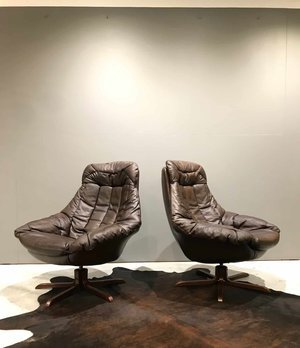

2 notes
·
View notes
Text
This Mid ’60s Sibbel Home In Healesville Is A True Family Legacy
This Mid ’60s Sibbel Home In Healesville Is A True Family Legacy
Stays
by Sally Tabart
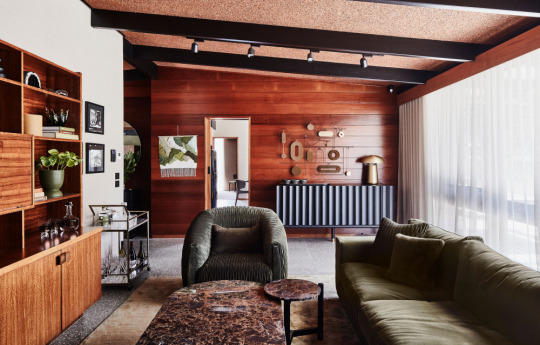
The lovingly-restored living room at Fleur Sibbel’s Healesville home. Photo – Mike Baker.
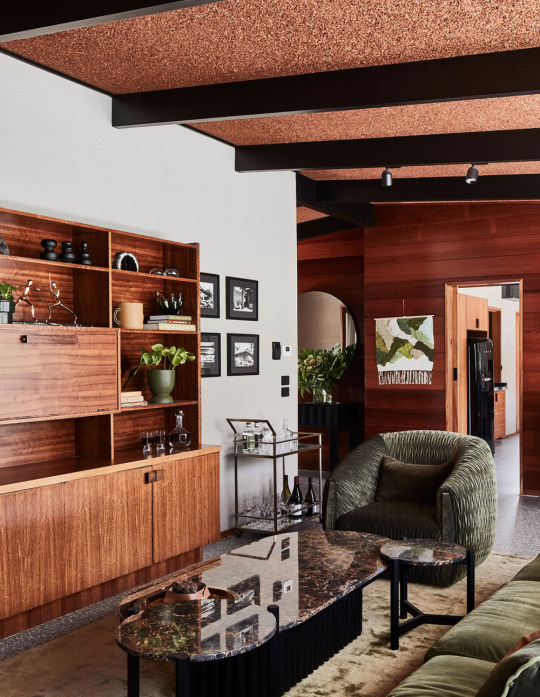
When Fleur removed plaster over the ceiling beams, it revealed a fantastic original cork ceiling! Photo – Mike Baker.

Impeccable detail and craftsmanship is a trademark of Sibbel homes.Photo – Mike Baker.

It was super important to Fleur to maintain the original kitchen. Cabinet makers at Zuster built new internal drawers and cupboards and re-attached the original door and drawer faces. Photo – Mike Baker.
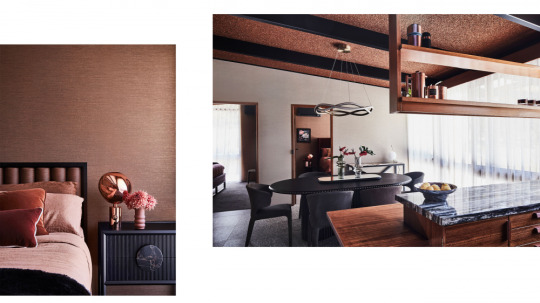
Among the few updates that Fleur made was new wallpaper on every wall. Photo – Mike Baker.

A grand, green bedroom. Photo – Mike Baker.
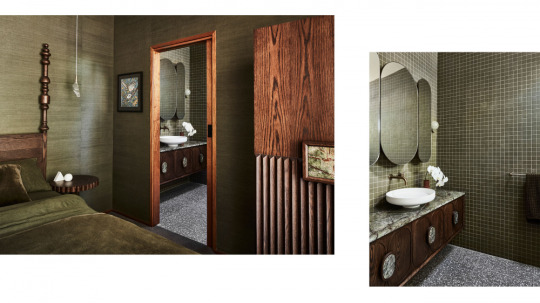
Impeccable detail in the bedroom and en suite. Photo – Mike Baker.
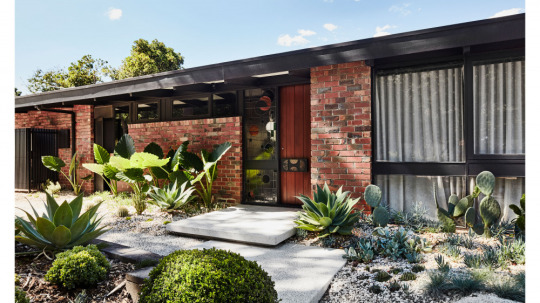
One of Fleur’s favourite features of the home is the signature Sibbel front door! Photo – Mike Baker.
When Fleur Sibbel, Managing Director of furniture and design business Zuster, first came across this home in Healesville in 2017, a part of her knew it was meant to be. But the connection ran deeper for Fleur than just falling in love with the place: ‘It’s a home built by my father, Meyer Sibbel, and designed by my grandfather Herman Sibbel, in 1968, so it has so much history for our family’ Fleur explains.
Many of the most significant mid-century homes built between the 1960s – 1980s in Melbourne were by Sibbel Builders, a third-generation family business brought to Australia by Fleur’s grandfather Herman and his brother Martin in the 1950s, later taken over by her father Meyer until the mid 1990s. Bringing over modern design sensibilities to Australia from Herman’s training as an architect in Holland, Sibbel Builders were instrumental in creating the vernacular for great home design in Melbourne that is still referenced and celebrated today.
Fleur and her husband Simon were mid-way through the renovation of their family home (also a Sibbel home) in Balwyn North when they first came across the Healesville house, but they weren’t really in the position to buy at the time ‘Two years later we were chatting and I said, “I still think about that Sibbel house in Healesville”. I searched [online] and it was back on the market – it hadn’t sold in 2017 and was back on the market in later 2019, just when we were ready!’ says Fleur.
After finding the home in its near-original condition, Fleur and Simon have made some careful updates with the help of builder Peter Cann, who started as an apprentice with Fleur’s Dad! ‘He did an amazing job on this house under the supervision of my Dad – it was just like the old days!’ She says.
We spoke with Fleur to learn a little more about this significant piece of personal and architectural history!
Hey Fleur! Can you tell us a little about your family history, and how it relates to your Healesville home?
I grew up in a Sibbel house in South Warrandyte on 5 acres, designed by my father- Meyer Sibbel. I’m one of four girls, and we all grew up in the family business, with Dad’s office at home and design all around us. We were constantly reminded that there wasn’t a son to take over Sibbel Buiders – already a four-generation old business, migrating from Holland in 1954. I was always so proud, and still am, of the houses Dad designed and built through the 70’s 80’s and 90’s.
As a family, we grew up discussing good design, quality and craftsmanship. It was just normal to us, but looking back it was probably quite different to other families. We loved visiting the building sites, the cabinet making factory and viewing plans of new house designs and projects of dads.
What condition was the home in when you purchased it?
We were lucky to find the house in its original state. They had painted beams and bathrooms, however there weren’t too many alterations. They had plastered over the beams in the kitchen, which was odd, making the ceilings lower. We removed the plaster and found the original cork ceiling lining, which I love.
It was super important for us to keep the original kitchen. I had our cabinet makers at Zuster build new internal drawers and cupboards and re-attach the original door and drawer faces. We also updated the bench tops to Fashion Granite and added a dishwasher and Miele appliances.
What other bits did you update?
We updated the bathrooms, with the Issy by Zuster bathrooms from Reece. It’s a bathroom collaboration Zuster designs and manufactures for Reece nationally. We also updated the flooring to terrazzo throughout and added wallpaper to every wall. I love the warmth and texture of wallpaper. We also re-instated the underfloor heating, which had broken 15 years earlier. The home is super toasty through the cold Yarra Valley mornings in winter.
How important was it to you to stay true to the original style/character of the home?
It was incredibly important to maintain the true beauty of this house and design integrity of the era. It’s like being in a time capsule, where life was simpler, houses were smaller and design was paramount.
What ended up happening to Sibbel Builders? Is your business, Zuster, a bit of an homage to the craftsmanship that runs deep in your family history?
My dad wound up Sibbel Builders in about 1995, when there was so much pressure on ‘price per square metre’ and builders changed from doing everything in house, like frames and cabinets, to outsourcing. It was really sad to close up, but really hard at the time to convince people to pay for the long lasting quality of Sibbel. If we only knew then – it would all turn around!
My sister Wilhelmina studied Furniture Design at RMIT and started designing furniture in 1994 at Dad’s factory. Dad closed Sibbel and helped in the furniture business (which was called Sibbel Furniture), then I joined 1996 to run the business side. We changed our name to Zuster in 2000 – meaning sister in Dutch. Dad retired about ten years ago, but has helped at Zuster so much over the years with construction, quality and manufacturing.
What are some of your favourite parts of the home?
There’s so much I love about the house, from the signature Sibbel front door to the timber cladding and warm materials and textures throughout the home. I love that the windows face north, looking out onto Mount Riddle and the garden. I love the bedrooms, the rich textures and the feeling of luxury on our weekend stays.
I especially love the link to my family heritage and knowing I will pass the house onto my children and grandchildren to enjoy.
When Fleur and her family aren’t using their Healesville home as a getaway from the city, The Sibbel House is available for short term accommodation! Book it here.
0 notes
Text
Don’t forget the west: mid-century modern and David Foulkes Taylor
https://images.theconversation.com/files/56965/original/w6tfnyjg-1408581081.jpg?ixlib=rb-1.1.0&q=45&auto=format&w=496&fit=clip
Why has David Foulkes Taylor again been left out of the history of mid-century Australian design? Ted Snell
In 1982, I wrote an introduction to a survey exhibition of the work of Western Australian furniture designer David Foulkes Taylor lamenting that so little attention had “… been directed towards the recording of art and culture in Western Australia” – despite an upsurge in publications on Australian art history. The exhibition and catalogue documenting Foulkes Taylor’s contribution was an attempt to redress that oversight.
David Foulkes Taylor in 1965.
Sadly that effort seems to have failed. Kirsty Grant, the curator of the current Mid-Century Modern: Australian furniture design exhibition at the National Gallery of Victoria (NGV), has omitted any reference to Foulkes Taylor’s work. His contribution to creating an appetite for modern design in Western Australia does not rate a mention. The exhibition and its substantial catalogue present a comprehensive survey of modern furniture design in Sydney and Melbourne from the second world war till the 1970s – but it is disappointing that such a misleading tagline was appended.
In a truly national survey you would expect to see some coverage of David Foulkes Taylor. The NGV publication makes no mention of any activity past the 129th meridian east longitude. The curator does note that her survey is “selective in its focus and with an emphasis on activities in Melbourne and Sydney”. Still, it’s hard to reconcile how emphasis can condone an omission on this scale.
It would have been more accurate to borrow from the show’s predecessor at the Queensland Art Gallery last year, California Design 1930–1965: Living in a Modern Way, and abandon the aspiration to present a nation-wide survey.
To set the record straight, Foulkes Taylor not only designed some important examples of modern furniture, but he also encouraged local manufacturers Charles and Roy Catt to build mass-produced jarrah furniture that had a lasting presence in the local market.
Influenced as a student at the Central School of Art in London by the light and delicate lines of Italian designers like Gio Ponti, on his return to Perth he modified his response to suit the available conditions. He had a passion for the native jarrah timber. Hard but brittle, the wood required a more robust treatment. Foulkes Taylor’s work presented a more sculptural form while concurrently highlighting the richness of the colour and grain.
David Foulkes Tayor’s Poona chair. Ted Snell
Commissions for University House at the University of Western Australia and private clients followed. His inventiveness led him to explore other materials such as tubular steel and to respond inventively to external influences.
This experimental approach led to his adaption of a British army demountable chair, which he called the Poona. His canvas, leather and jarrah chair came in kit form and was described in The Age on October 12 1959 as “…resurrected and revamped by the brilliant Perth designer David Foulkes Taylor and is sold (£15) by Andersons in Chapel Street”.
In the 1950s he almost single-handedly created an appetite for modern design in Perth by importing work by international designers such as Marimekko, Arabia, Alvo Alto and Marcel Breuer and showing local artists and designers in his home and later in a purpose-built modernist showroom. This was designed by Julius Elischer and opened in 1965.
Showroom designed by Julius Elischer. Ted Snell
While a student at Geelong Grammar, Foulkes Taylor’s art teacher had been Ludwig Hirschfeld Mack, who taught a curriculum based on his experience as a student at the Bauhaus and later teacher at the University of Craft and Architecture in Weimar. That early introduction to modernist design and the principle of economy of form inspired him throughout his life. In his showroom he combined the best in Scandinavian and Japanese design with his own furniture, creating a magnet for those attracted to the rising tide of internationalism that was sweeping Perth into the 20th century.
The former country town was shedding its husk and taking on the role of international city. Perth was in the spotlight. With the modernist Council House designed by Jeffrey Howlett and [Don Bailey](http://en.wikipedia.org/wiki/Donald_Bailey_(architect) rising up from St Georges Terrace, Howard Taylor’s murals in the newly completed Passenger Terminal in Fremantle and new modernist buildings completed to house Commonwealth Games athletes, it was necessary for the citizens of this revived city to look modern too; to buy new furniture, lamps and fabrics and art by local artists.
The place to buy was David Foulkes Taylor’s white showroom on Broadway, and many did.
Foulkes Taylor’s tragic death in a car accident in 1966 ended the contribution of this inspired designer and impassioned advocate for modern design. It is unfortunate his contribution is not acknowledged alongside Grant Featherstone, Clement Meadmore, Wolfgang Sievers, Fred Ward and the other great Australian designers listed in Mid-Century Modern.
Ted Snell does not work for, consult, own shares in or receive funding from any company or organization that would benefit from this article, and has disclosed no relevant affiliations beyond their academic appointment.
Source link
from http://www.houseoffashion.co.za/dont-forget-the-west-mid-century-modern-and-david-foulkes-taylor/
0 notes
Text
St Patrick’s Cathedral

(Hall, 2018)
What is it about cathedrals? Even if they hold no significance for a visitor from a religious perspective, they nevertheless captivate. I sometimes wonder whether the silence within these great buildings is not so much due to the signs demanding it upon entry, but rather it is that the sheer grandeur leaves visitors speechless.
Our local Cathedral, St Patrick’s, on Eastern Hill just outside Melbourne’s CBD, certainly has that effect.
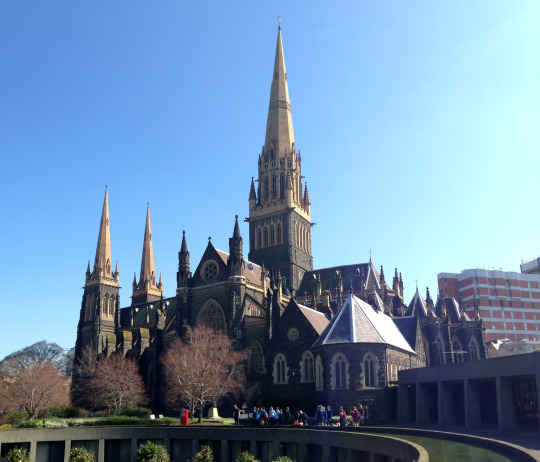
Photo 1: St Patrick’s Cathedral, 1 Cathedral Place, East Melbourne. (Hall, 2014)
Designed by William Wardell, the Cathedral (Photo 1) is the largest Gothic Revival building in Victoria and took close to 100 years to complete. Construction commenced in 1858. The bulk of the building was completed in 1897, but spires and confessionals were not added until around 1936-40.(1)
Gothic Revival was a deliberate revival of gothic period style, commencing mid 18th century and lasting until around the 1870s.(2) It was “over the top … a reimagining of the Middle Ages”(3). It was a perfect fit for the gold rush boom times being experienced in Victoria at the time construction commenced and for those of the Catholic Christian faith wanting to show utmost reverence for their God.
Solid natural materials like brick and stone were characteristic building materials of the Gothic Revival period.(4) The Cathedral was constructed from a variety of such materials including slate, Malmsbury bluestone, Hobart stone and New Zealand stone, together with solid woods like oregon and oak.(5)
Gothic Revivalists looked to the Gothic period for key design elements, particularly when designing religious buildings. Gothic Revival style churches had pointed arched windows, doors and porticos, and often featured high spires.(6) Flying buttresses, pinnacles, tracery, gargoyles and ribbed stone vaulting were all Gothic period features adopted in various forms by Gothic Revival designers. These style elements are clearly identifiable in Wardell’s design. (Photos 2 and 3)
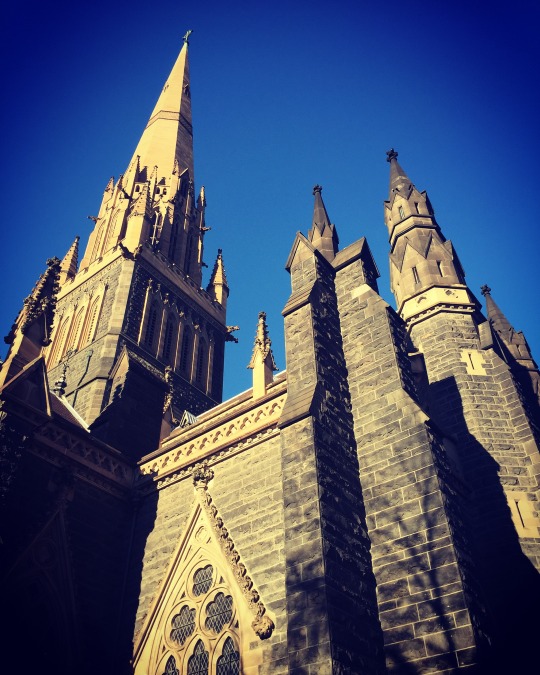
Photo 2: Pinnacles, the main spire and tracery of the Cathedral. (Hall, 2018)
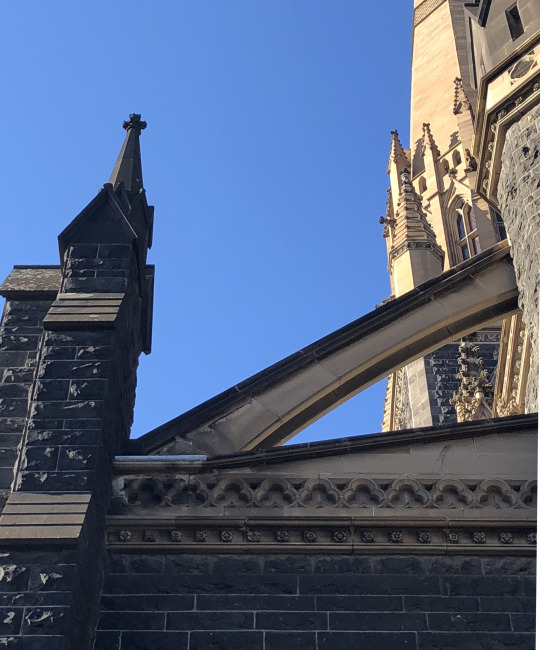
Photo 3: One of the Cathedral’s flying buttresses. (Hall, 2018)
In contrast to the exterior’s apparent severity, exquisite details of the Gothic Revival style are revealed on closer inspection. Intricate stone carvings of medieval floral motifs, linear ribbing, ornate stone tracery, lead window cames in diamond shapes, and stone-carved heads grace the walls and windows. A magnificent bronze tracery grill also features on the main entrance archway. (Photos 4 to 6)
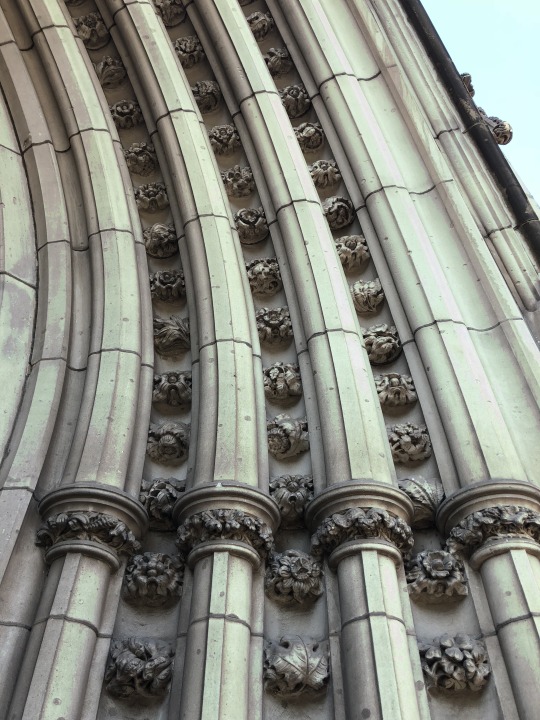
Photo 4: Archway ribbing and intricate floral stone carvings. (Hall, 2018)
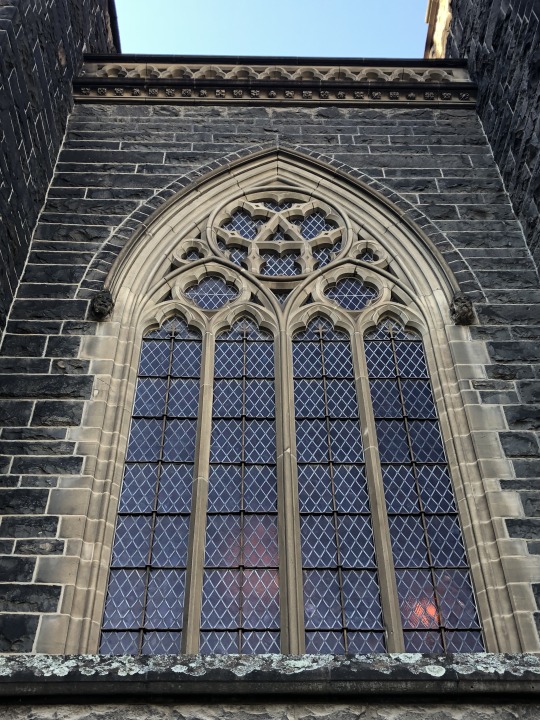
Photo 5: Pointed arched leadlight window with window tracery, diamond-shaped lead cames and decorative stone carved heads. (Hall, 2018)
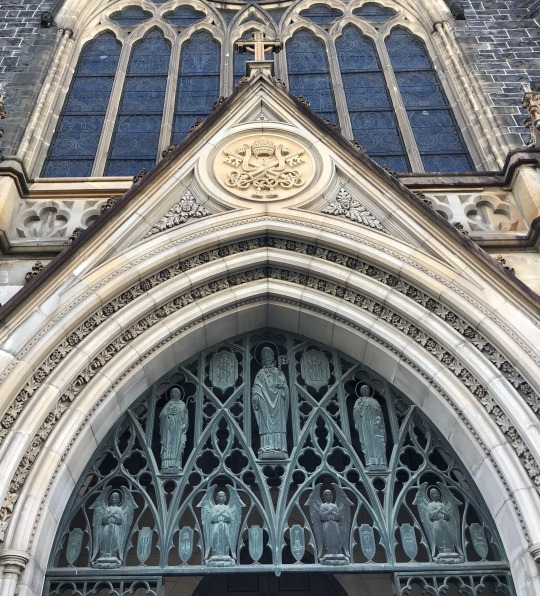
Photo 6: Magnificent bronze tracery graces the main entrance to the Cathedral. (Hall, 2018)
Gargoyles are also found on the Cathedral’s façade and, in fact, sitting just below some quatrefoil stone detailing to the right of the Cathedral’s side entrance is a gargoyle in the form of former Premier, Jeff Kennett – a local stone maker’s contribution to some remodelling in 1992.(7) (Photo 7)
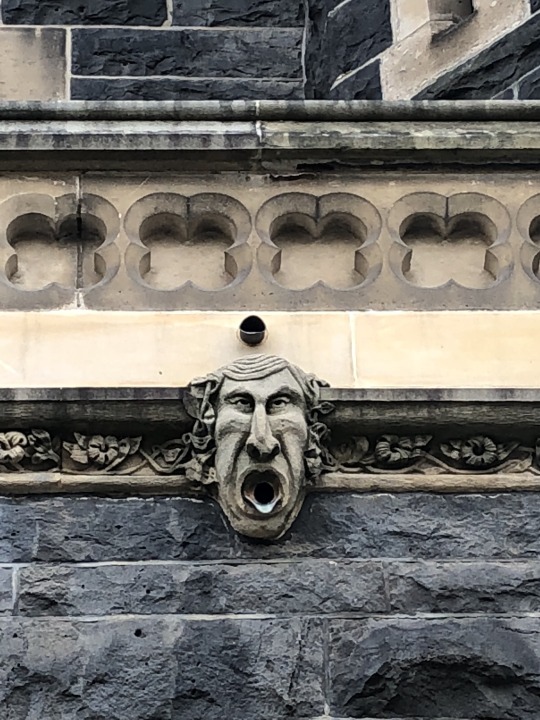
Photo 7: Former Premier, Jeff Kennett, immortalised in stone. (Hall, 2018)
Gothic Revival buildings heavily emphasised verticality.(8) Therefore, it is no surprise that the interior of the Cathedral is breathtaking. Massive bluestone pillars soar to the heavens, supporting stunning ribbed vaulted ceilings over the two aisles (Photo 8) and an extraordinary wooden hammerbeam ceiling lit by clerestory windows covers the nave. (Photo 9) The light and sense of extreme vertical space created by these architectural features is palpable and only adds to that already created externally by elements such as the Cathedral’s three massive spires.
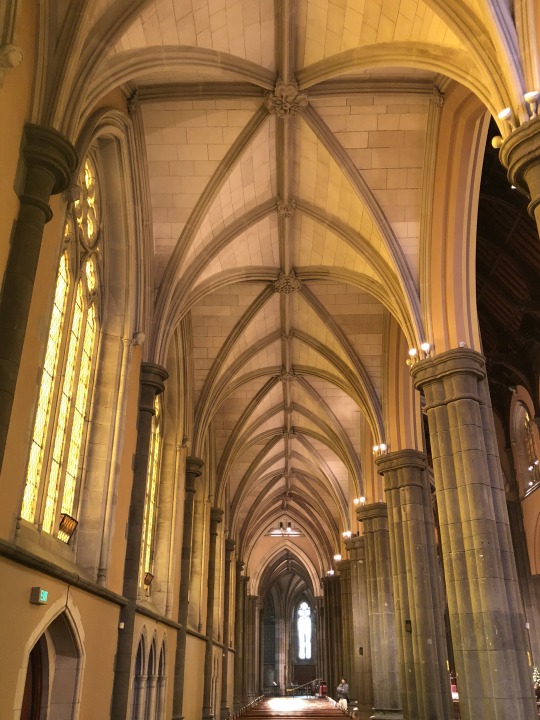
Photo 8: Sculptural bluestone pillars and the vaulted ceiling of one of the aisles in the Cathedral. (Hall, 2018)

Photo 9: Light is shed from the clerestory windows onto the hammerbeam ceiling above the nave. (Hall, 2018)
In true Gothic Revival style, pattern, shape and ornamentation abound inside. Extraordinary stained glass windows (including the great west window installed in 1867(9)) are numerous. (Photo 10) The doors throughout the Cathedral are typically ornately carved, and bronze and brass decorative elements can be found throughout. (Photo 11) Although wooden floors and carpets were common for the style,(10) tiles were also an important feature and appropriately, decorative multi-coloured mosaics and Milton tiles (11) were used to cover the Cathedral’s floor. (Photo 12)
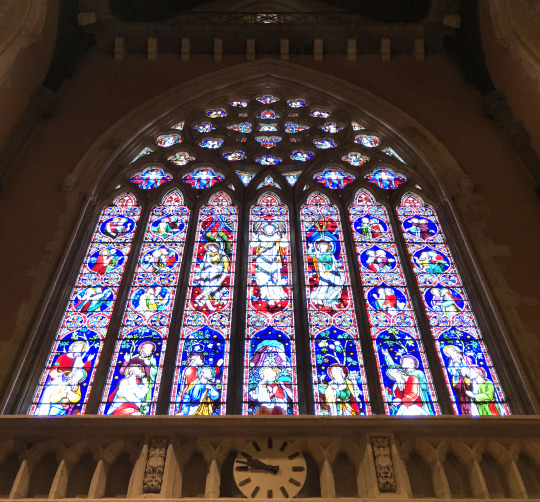
Photo 10: The Great West Window. (Hall, 2018)
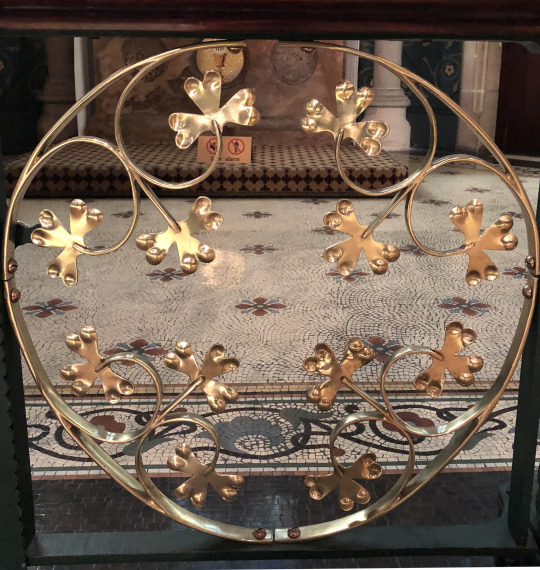
Photo 11: Three leaf clover brass detail. (Hall, 2018)
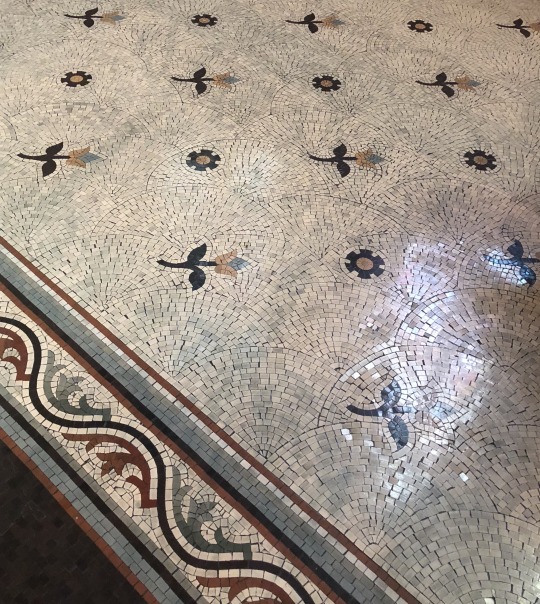
Photo 12: Complex mosaic floors carry through the floral motif. (Hall, 2018)
Gothic Revivalists didn’t shy away from colour, so rich deep colours including purples, greens and reds were utilised.(12) Although it was a religious building, such colours were used in the Cathedral on the heavily stencilled patterned walls which, typical of the style, feature “gothic motifs, such as quatrefoils and fleur-de-lis”(13). Together with the carved ceiling in the Sanctuary, decoratively patterned with gold, and the intricate mosaic tiled floors, this colouring further adds to the sense of splendour. (Photos 13 to 15)
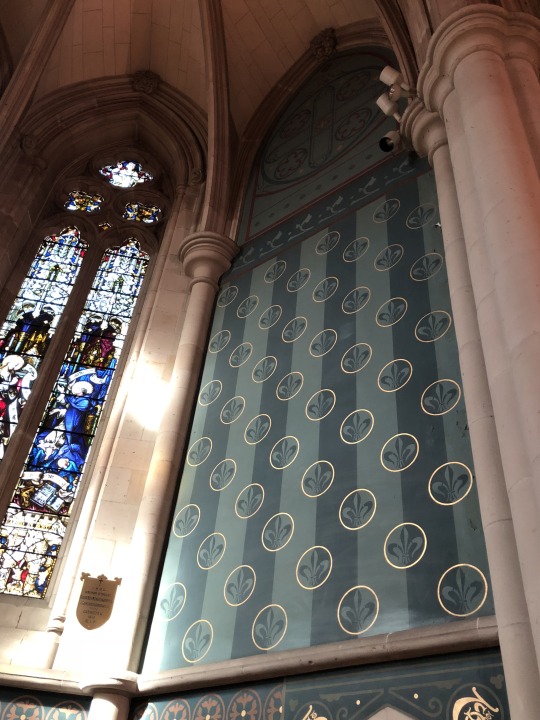
Photo 13: Deep green walls with gold circle detailing around fleur-de-lis motifs. (Hall, 2018)

Photo 14: Intricate patterns adorn the walls. (Hall, 2018)
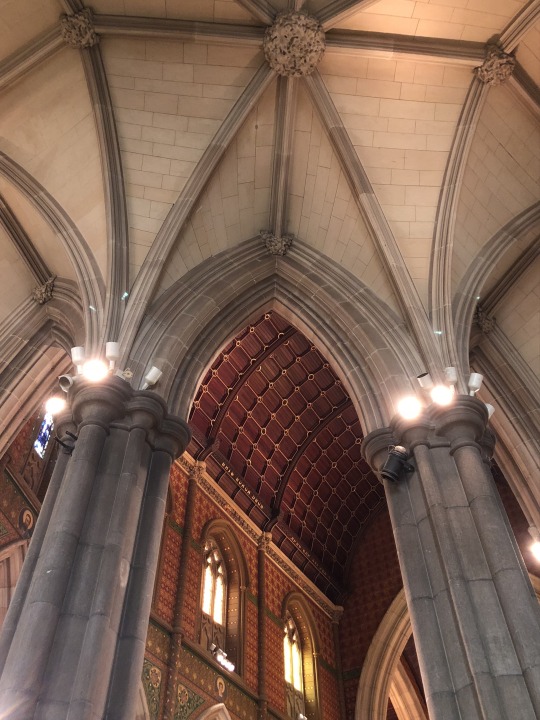
Photo 15: Rich reds, greens and yellows on the walls around the Sanctuary contrast with the grey stone. (Hall, 2018)
Heavy solid wooden furniture with carved legs, backs and details, and rich fabric and textile-designed upholstery were common in Gothic Revival period interiors.(14) In general, it was a masculine aesthetic. While the furniture in the Cathedral is of an ecumenical style, these features are evident. For example, the cathedra (Archbishop’s chair) is carved from red gum with pointed elements and wooden tracery, and the pews are solid wood with carved ends (photo 16). The High Altar also exudes Gothic Revival grandeur, being made from Emperor Red and Irish Green marble and covered in mosaic portraits.(15)

Photo 16: Carved pew end. (Hall, 2018)
While we have the Gothic Revivalist movement to thank for the extraordinary beauty of this Cathedral, we must also be forever grateful to those gothic period designers who came centuries before. It was they who were responsible for some of the most innovative developments in architectural design history which ultimately enabled the creation of this exquisite building.
Footnotes
(1) “Victorian Heritage Database – St Patrick’s Cathedral Precinct.” Heritage Council Victoria. July 1, 1999. http://vhd.heritagecouncil.vic.gov.au/places/355
(2) “Gothic Gothic Revival Neo-Gothic.” RIBA Architecture.com. January 1, 2017. https://www.architecture.com/knowledge-and-resources/knowledge-landing-page/gothic-gothic-revival-neo-gothic
(3) “Australian architecture.” Australia Explained. Accessed September 7, 2018. https://www.australia-explained.com.au/history/australian-architecture
(4) “Boundless Art History: The Gothic Revival.” Pressbooks. Accessed September 7, 2018. https://courses.lumenlearning.com/boundless-arthistory/chapter/the-gothic-revival/
(5) "Features Building Materials” Catholic Archdiocese of Melbourne, Saint Patrick’s Cathedral. Accessed September 7, 2018. http://www.cam.org.au/cathedral/Features/Article/13318/building-materials
(6) “Gothic Revival Style 1830 – 1860.” Pennsylvania Historic and Museum Commission. Accessed September 6, 2018. http://www.phmc.state.pa.us/portal/communities/architecture/styles/gothic-revival.html
(7) Danno. “The Jeff Kennett Gargoyle.” Beside the Yarra. Stories from Melbourne’s History. (blog) March 16, 2013. http://marvmelb.blogspot.com/2013/03/the-jeff-kennett-gargoyle.html
(8) “Gothic Revival architecture.” May 23, 2017. Walls with Stories. http://www.wallswithstories.com/uncategorized/gothic-revival-architecture.html
(9) “Victorian Heritage Database – St Patrick’s Catholic Cathedral.” Heritage Council Victoria. May 3, 2005. http://vhd.heritagecouncil.vic.gov.au/places/64275
(10) Miller, Judith. Furniture. (London: Dorling Kindersley Ltd, 2011) 137-144.
(11) "Chancel & Sanctuary Sanctuary.” Catholic Archdiocese of Melbourne, Saint Patrick’s Cathedral. Accessed September 8, 2018. http://www.cam.org.au/cathedral/Features/Chancel-Sanctuary/Article/13390/Sanctuary
(12) “Gothic Interior Style.” Study.com Accessed September 8, 2018. https://study.com/academy/lesson/gothic-interior-design.html
(13) "Chancel & Sanctuary Sanctuary.” Catholic Archdiocese of Melbourne, Saint Patrick’s Cathedral. Accessed September 8, 2018. http://www.cam.org.au/cathedral/Features/Chancel-Sanctuary/Article/13390/Sanctuary
(14) Osband, Linda. Victorian Gothic House Style. Devon: David & Charles, 2000.
(15) “Chancel & Sanctuary High Alter.” Catholic Archdiocese of Melbourne, Saint Patrick’s Cathedral. Accessed September 8, 2018. http://www.cam.org.au/cathedral/Features/Chancel-Sanctuary/Article/13391/High-Altar
References
Australia Explained. “Australian architecture.” Australia Explained. Accessed September 7, 2018. https://www.australia-explained.com.au/history/australian-architecture
Bulovska, Katerina. “Gothic Revival architecture.” May 23, 2017. Walls with Stories. Accessed September 7, 2018. http://www.wallswithstories.com/uncategorized/gothic-revival-architecture.html
Catholic Archdiocese of Melbourne, Saint Patrick’s Cathedral. “Chancel & Sanctuary High Alter.” Catholic Archdiocese of Melbourne, Saint Patrick’s Cathedral. Accessed September 8, 2018. http://www.cam.org.au/cathedral/Features/Chancel-Sanctuary/Article/13391/High-Altar
Catholic Archdiocese of Melbourne, Saint Patrick’s Cathedral. "Chancel & Sanctuary Sanctuary.” Catholic Archdiocese of Melbourne, Saint Patrick’s Cathedral. Accessed September 8, 2018. http://www.cam.org.au/cathedral/Features/Chancel-Sanctuary/Article/13390/Sanctuary
Catholic Archdiocese of Melbourne, Saint Patrick’s Cathedral. "Chancel & Sanctuary Throne of the Archbishop (Cathedra).” Catholic Archdiocese of Melbourne, Saint Patrick’s Cathedral. Accessed September 8, 2018. http://www.cam.org.au/cathedral/Features/Chancel-Sanctuary/Article/13394/Throne-of-the-Archbishop-Cathedra
Catholic Archdiocese of Melbourne, Saint Patrick’s Cathedral. "Features Building Materials” Catholic Archdiocese of Melbourne, Saint Patrick’s Cathedral. Accessed September 7, 2018. http://www.cam.org.au/cathedral/Features/Article/13318/building-materials
Catholic Archdiocese of Melbourne, Saint Patrick’s Cathedral. "Features Main Entrance” Catholic Archdiocese of Melbourne, Saint Patrick’s Cathedral. Accessed September 8, 2018. http://www.cam.org.au/cathedral/Features/Article/13330/main-entrance
Hall, Elizabeth. “Archway ribbing and floral stone carvings.” Unpublished photograph, August 24, 2018. jpeg image.
Hall, Elizabeth. “Bluestone pillars and vaulted ceiling.” Unpublished photograph, August 24, 2018. jpeg image.
Hall, Elizabeth. “Brass Detail.” Unpublished photograph, August 24, 2018. jpeg image. Hall, Elizabeth. “Exterior of St Patrick’s Cathedral, East Melbourne.” Unpublished photograph, August 28, 2014. jpeg image.
Hall, Elizabeth. “Flying buttress.” Unpublished photograph, August 24, 2018. jpeg image.
Hall, Elizabeth. “Former Premier, Jeff Kennett, immortalised in stone.” Unpublished photograph, September 10, 2018. jpeg image.
Hall, Elizabeth. “Golden Spire.” Unpublished photograph, August 15, 2018. jpeg image.
Hall, Elizabeth. “Green wall with fleur de lis pattern.” Unpublished photograph, August 24, 2018. jpeg image.
Hall, Elizabeth. “Hammerbeam ceiling.” Unpublished photograph, August 24, 2018. jpeg image.
Hall, Elizabeth. “Heavily patterned wall.” Unpublished photograph, August 24, 2018. jpeg image.
Hall, Elizabeth. “Magnificent bronze tracery graces the main entrance to the Cathedral.” Unpublished photograph, September 11, 2018. jpeg image.
Hall, Elizabeth. “Mosaic floors.” Unpublished photograph, August 24, 2018. jpeg image.
Hall, Elizabeth. “Pew end.” Unpublished photograph, August 24, 2018. jpeg image.
Hall, Elizabeth. “Pinnacles, spire and tracery.” Unpublished photograph, July 11, 2016. jpeg image.
Hall, Elizabeth. “Pointed arched leadlight window with window tracery and decorative stone carved heads.” Unpublished photograph, August 24, 2018. jpeg image.
Hall, Elizabeth. “Red wall.” Unpublished photograph, August 24, 2018. jpeg image.
Hall, Elizabeth. “The Great West Window.” Unpublished photograph, August 24, 2018. jpeg image.
Heritage Council Victoria. “Victorian Heritage Database – St Patrick’s Cathedral Precinct.” Heritage Council Victoria. July 1, 1999. Accessed September 7, 2018 http://vhd.heritagecouncil.vic.gov.au/places/355
Heritage Council Victoria. “Victorian Heritage Database – St Patrick’s Catholic Cathedral.” Heritage Council Victoria. May 3, 2005. Accessed September 7, 2018 http://vhd.heritagecouncil.vic.gov.au/places/64275
History Lists. “10 Defining Characteristics of Gothic Architecture. “ History Lists. Accessed September 7, 2018. http://historylists.org/architecture/10-defining-characteristics-of-gothic-architecture.html
Lumen Learning. “Boundless Art History: The Gothic Revival.” Pressbooks. Accessed September 7, 2018. https://courses.lumenlearning.com/boundless-arthistory/chapter/the-gothic-revival/
Miller, Judith. Furniture. London: Dorling Kindersley Ltd, 2011.
Muscato, Christopher. “Gothic Interior Style.” Study.com Accessed September 8, 2018. https://study.com/academy/lesson/gothic-interior-design.html
Osband, Linda. Victorian Gothic House Style. Devon: David & Charles, 2000.
Pennsylvania Historic and Museum Commission. “Gothic Revival Style 1830 – 1860.” Pennsylvania Historic and Museum Commission. Accessed September 6, 2018. http://www.phmc.state.pa.us/portal/communities/architecture/styles/gothic-revival.html
RIBA Architecure.com “Gothic Gothic Revival Neo-Gothic.” RIBA Architecture.com. January 1, 2017. Accessed September 9, 2018. https://www.architecture.com/knowledge-and-resources/knowledge-landing-page/gothic-gothic-revival-neo-gothic
0 notes
Text
VICTORIAN ARTS CENTRE
The Arts Centre is widely known around Melbourne for its entertainment and is positioned along St Kilda Road, Melbourne, close by the Yarra River. Guests often go to enjoy live music, theatrical and comedic performances held in their grand theatre halls. Approximately 4,000 performances and public events are held at the centre every year!
Construction of the Arts centre began in 1973 and was completed and opened in October 1984. Roy Grounds (architect) was originally appointed the position of designing the building but by 1979 John Truscott was to redesign and plan new interiors for the Melbourne Concert hall and Theatres building. The Arts Centre comprises of: “The Hamer Hall”, “State Theatre”, “Fairfax Studio” and “ Playhouse”. What makes this building so remarkable and recognisable is the tall spire attached to the main building. It was completed in 1996, reaches 162 metres and the steel in which it is built from weighs an amazing 97.7 tonnes.
The Arts Centre has quite a long and complicated history. Here is a brief timeline of events to give you an insight into its interesting background.
1887: “Cooper & Bailey's Great American International Circus” establishes its tent on the site
1907: “Wirth Brother's Circus” takes over site for 50 years to follow until their building was destroyed by a fire, 1953
1959 : Roy Grounds ( architect) is designated to the project of the Arts Centre
1973 : Construction began!
1982 : Hamer Hall ( was called “Melbourne Concert Hall)
1984 : Arts Centre Completed
1996 : Spire officially completed
From this timeline of events, you are able to see that this site has been used to entertain the people of Melbourne from the late 1800's up until till now. This is something I find quite significant and unique.
Roy Grounds (1905-1981), the original Victorian designer/architect for the Arts Centre is known for his modern take on design. He focused particularly on geometric based design elements. He was more well known for his modern home designs, which he helped introduce to Australia. I believe his design concepts contrasted against others as he was ahead of his time. Grounds modernism and primarily geometric focus were sometimes criticised by other designers and architects, as he had a unique interpretation of the modern style. Modernism emerged in the late 19th century-early 20th century. Features of this design era included: clean lines, basic shapes and forms, linear elements, reinforced concrete, glass, steel. Function and practicality helped dictate design in this era. Most of these elements can be seen in the Arts Centre Melbourne, ie the spire.
Whilst saying this, The Arts centre also combines and uses Post-modern features with modernism, creating a visually unique building. This is particularly seen inside of the building. For example, the soft textures, bold colour choice and large mirrors indicate the shift in design style. These particular elements emulate features of 1920's Art Deco style. Post-modernism (mid-late 20th century) liked to recycle past historical trends and events which can be seen in the Arts Centre. Post-modernism was a reaction to modernism and in this case, both styles seem to compliment each other.
In terms of the exterior, the Spire is the most intriguing feature and the triangular steel design reflects Grounds love for geometry and modern design. The spire has a sharp and long white spire reaching up to the sky almost resembling the Eiffel Tower. The spire also lights up at night and looks quite whimsical, similar to the Eiffel tower. It dominates the surrounding landscape due to its scale and appearance. Its delicate yellow steel framework leads your vision up to the very top and its gravitational pull is what makes it a strong focal point amongst the other buildings. Whilst its dominance evokes this sense of grandness it also creates a magical atmosphere ( particularly at night). Looking towards the bottom of the spire, you can see the beautiful curvature of the framework. It appears as if the spire has attached itself to the main concrete foundation of the building resembling an underwater creature such as a starfish or octopus. This way, the building allows the viewer's imagination to wander, which brings a fun playful element to its design. The simple rounded concrete design of the main building reinforces the contemporary style of the centre.
The Arts Centre is probably my favourite interiors of the three buildings. Guests are welcomed by a rich colour palette of reds and gold. Deep red carpet can be seen throughout the whole building, including the stairs. The balustrades are gold, including some of the pillars. The interior walls are either of creamy colour or are made up of a light brown timber. Some of the walls are lined with large mirrors creating an illusion of a more spacious area, emphasising its grandness. Lighting is kept simple and classy. Furniture is kept quite simple and minimalistic in the waiting rooms and foyer, emphasising the modernistic design. The choice of plain brown chairs and bench seating means the furniture doesn't distract from the beautiful interior. The combination of a tasteful colour pallet, warm lighting and beautiful large mirrors leaves an impression of high class and elegance. This may encourage guests to have a more enjoyable evening as they may feel a sense of royalty. Such glamorous design elements indicate the post-modern aspect of the interior and references back to Art Deco style.
Hamer Hall is one of the most well known performing spaces. Hamer Hall is a multi-level concert venue for orchestral performances. It originally opened as the “Melbourne Concert Hall” but was renamed in 2004, paying homage to former Victorian Premier Sir Rupert Hamer. By 2012 the Hall had undergone major redevelopment. This includes new modern foyer spaces, river entrances, stairs, improved acoustics and seating, disabled access, and more. Hamer Hall is more modern and minimalistic compared to the rest of the buildings more post-modern interior.
The Halls' walls are painted in patterns and colours which are said to reflect Australia's gemstone deposits. This gives the impression that the building was carved out of a hillside. This natural textural appearance reminds guests that the hall is underground and makes their experience even more memorable. The hall seats 2462 which are now better than before and are of a Spanish design. With all the refurbishments the hall has undergone, it aims to create the most comfortable experience for guests. The earthy, natural design and minimal colour pallet ( mainly shades of light brown) and wide open space creates a tranquil atmosphere allowing guests to escape from the world above. The design also allows for guests to focus solely on the performers and to enjoy the music travelling throughout the room. The contemporary refurbishments stay true to Roy Grounds original project vision.
The State Theatre is probably the grandest in terms of design and reflects the same elegant features that can be seen in the foyer. The theatre is underground and the stage is one of the largest in the world, apparently equivalent to the floor space of eight suburban homes! The theatre is typically used for ballet and musical productions such as the opera. As guests enter they are faced with the same deep red colour scheme that can be seen outside the theatre. Almost everything is of red colour with exception of the stage and the seating barriers on the 2nd and 3rd floors. The red scheme accompanied with the ceiling lights creates a very warm and pleasant environment making guests feel welcomed straight away. Seating is tiered ( 3 floors) and space is large enough to hold 2,000 people. As the lights dim, 75,000 small brass cups decorate the ceiling above can be seen, which helps create an enchanting atmosphere. The heavy red-draped stage curtain is decorated with hand-painted windflowers, the state's Coat of Arms and the outspread of a lyrebirds tale. The gold paint shines brightly in the night and mesmerises its audience. The State Theatre falls nothing short of being majestic and timeless. The bold expansive space encourages the audience to comfortably appreciate performances in all their glory. Guests may be overcome with feelings of excitement, curiosity and joy even before the show has started. There is a stark contrast between the design of this theatre compared to Hamer Hall. The theatre space represents a 1920′s design whilst Hamer Hall remains simple and modern.
Having been to the Arts Centre myself, I can express the significant way in which the design and environment captivate guests as they walk through the door. There are no other words than timeless, elegant, royal and majestic that can describe the design and emotions that guests are able to feel.
REFERENCE:
References
"Our History | Arts Centre Melbourne", Arts Centre Melbourne, date accessed :14/04/2018, https://www.artscentremelbourne.com.au/en/about-us/our-history.
Conrad Hamann, "Biography - Sir Roy Burman Grounds”, Australian Dictionary Of Biography, date accessed : 14/04/2018, http://adb.anu.edu.au/biography/grounds-sir-roy-burman-12571.
"Roy Grounds", Wikipedia, date last edited : 22nd October 2016, date accessed :14/04/2018, https://en.wikipedia.org/wiki/Roy_Grounds.
"Modern Architecture", Wikipedia, date last edited: 8th April 2018, date accessed: 14/04/2018 https://en.wikipedia.org/wiki/Modern_architecture.
Openlearn from the open university, “Modernism: design in a nutshell”, Youtube, date uploaded :May 8th 2013, https://www.youtube.com/watch?v=vDCEtnXlA4Y
"Hamer Hall | Arts Centre Melbourne", Arts Centre Melbourne, date accessed : 14/04/2018, https://www.artscentremelbourne.com.au/Visit/Theatres-and-Spaces/Hamer-Hall.
"Melbourne’S Hamer Hall Reopens: Is $136 Million Money Well Spent? , Stage Whispers, published in the September / October 2012 edition of Stage Whispers, date accessed: 15/04/2018, http://www.stagewhispers.com.au/articles/197/melbourne%E2%80%99s-hamer-hall-reopens-136-million-money-well-spent.
"State Theatre”, Arts Centre Melbourne" , date accessed : 15/04/2018, https://www.artscentremelbourne.com.au/en/visit/theatres-and-spaces/state-theatre.
*I ADDED MY IMAGES FOR THE ARTS CENTRE HOWEVER IT WILL NOT ALLOW ME TO POST WITH PHOTOS* (no idea why)
0 notes
Text
Advantages of Using Danish Furniture in Sydney: Visit Dedicated Stores!
If you want to elevate the living spaces with style, they can embrace the timeless allure of authentic Danish furniture in Sydney. Whether anyone is searching for authentic Danish design furniture, they can visit renowned furniture suppliers who have a myriad of Danish and Italian pieces of furniture with exquisite craftsmanship, functional design, and a harmonious blend of usefulness.

These suppliers have a variety of pieces of furniture including vintage chairs that seamlessly integrate into modern homes with a blending touch of retro elegance and sophistication.
Where to Buy Regional Style Furniture in Melbourne?
In Melbourne and Sydney, some recognised premium stores are available for original mid-century modern furniture. They have curated a collection of showcases of iconic mid-century sofas, retro-modern decor, and classic Australian mid-century Scandinavian furniture.
These reliable stores ensure the quality, durability, and connection to the rich history of the mid-century design of Danish and Italian furniture for their customers. They have a wide variety of mid-century international designer pieces of furniture to add a unique charm and a distinctive timeless ambience to the home.
What are the Advantages of Regional Style Furniture?
Usually, regional style furniture provides a distinct blend of cultural heritage, workmanship, and design that can match interior aesthetics, with significant benefits.
For people who want a personalised and culturally rich living area, these pieces of furniture can add a blend the regional traditions and history. Authentic vintage-style furniture delivers authenticity and character to homes and living spaces. As a result, it can create a meaningful and visually appealing atmosphere.
Recognised suppliers that deliver regional style furniture, help people to connect with different cultures and express their admiration for diverse design traditions. Whether it is the intricacy of international woodwork, the simplicity of Scandinavian design, or the rustic elegance of Mediterranean influences, these suppliers have a wide variety of collections of sofas, chairs, table storage and more.
The attractiveness of their collections can change any residential or commercial living space into a significant and culturally rich retreat, with a legacy of regional art and craftsmanship.
Overall, anyone who loves to create a distinctive ambience for their home visits dedicated stores to experience the unparalleled beauty and functionality of sophisticated pieces of vintage-style Danish and Italian furniture.
Source
1 note
·
View note
Text
#205 mid century modern sofa
Mogens Hansen
Vintage Leather sofa
a beautiful example of a mid-century vintage, leather sofa by Mogens Hansen, Denmark. Upholstered in soft and supple cognac coloured leather, with age-appropriate patina.
180L x 80D x 80H cm approximately.
Seat height: 42 cm
#vintage danish leather sofa melbourne#vintage stouby sofa#mid century modern leather sofa#3 seat mid century vintage couch#vintage caramel coloured leather sofa#mid century furniture melbourne#THE HISTORY mid century furniture melbourne#danish mid century furniture for sale melbourne#mid century modern furniture for sale melbourne#vintage mid century modern leather sofa#vintage mid century modern leather couch#the best vintage furniture melbourne#green leather danish sofa#green leather stouby sofa#green leather mid century sofa for sale melbourne#mid century modern stouby sofa#mid century danish couch#danish sofa melbourne#danish sofa australia#mid century danish furniture australia#mid century danish lounge furniture#vintage furniture melbourne#vintage furniture australia
0 notes
Text
#203 Danish 2 seater leather sofa
a very good example of a Danish mid century, vintage leather sofa. Upholstered in soft, brown, patinated leather. Very comfortable.
132L x 80D x 73H cm
#vintage danish leather sofa#mid century furniture melbourne#danish furniture for sale melbourne#danish leather sofa#danish leather couch for sale australia#best mid century furniture store#danish furniture store near me#danish sofa melbourne#danish sofa sydney#danish leather 2 seater couch#danish 2 seater leather sofa#vintage sofas melbourne#mid century modern leather sofa#mid century modern leather couch#2 seater scandinavian leather sofa#danish 2 seat leather sofa#vintage scandinavian 2 seat sofa#danish leather sofa for sale melbourne#danish 2 seat sofa australia#the history mid century furniture melbourne
0 notes
Text
#201 vintage danish stouby sofa
a beautiful example of a mid century, vintage, leather sofa by Stouby, Denmark. Upholstered in immaculate, dark green, soft leather with age appropriate patina.
200L x 80D x 80H cm approximately.
Seat height: 42 cm
#vintage danish leather sofa melbourne#vintage stouby sofa#mid century modern leather sofa#3 seat mid century vintage couch#vintage caramel coloured leather sofa#mid century furniture melbourne#THE HISTORY mid century furniture melbourne#danish mid century furniture for sale melbourne#mid century modern furniture for sale melbourne#vintage mid century modern leather sofa#vintage mid century modern leather couch#the best vintage furniture melbourne#green leather danish sofa#green leather stouby sofa#green leather mid century sofa for sale melbourne
0 notes
Text
#55 vintage danish stouby sofa
a beautiful example of a mid century, vintage, leather sofa by Stouby, Denmark. Upholstered in immaculate, biscuit coloured, soft leather.
200L x 80D x 80H cm approximately.
Seat height: 42 cm
#vintage danish leather sofa melbourne#vintage stouby sofa#mid century modern leather sofa#3 seat mid century vintage couch#vintage caramel coloured leather sofa#mid century furniture melbourne#THE HISTORY mid century furniture melbourne#danish mid century furniture for sale melbourne#mid century modern furniture for sale melbourne#vintage mid century modern leather sofa#vintage mid century modern leather couch#the best vintage furniture melbourne
0 notes
Text
mid century modern italian coffee table
Ico and Louisa Parisi
for, Como
Italy - 1950s.
Italian, 1950s mid-century modern, etched copper coffee table by Ico and Louisa Parisi.
Etched copped top with, exotic timber veneer on three-star base.
#mid century modern coffee table#mid century modern copper topped table#italian 1950s coffee table#Ico and Louisa Parisi#mcm#midcentury furniture#midcentury furniture melbourne#mid century modern coffee table for sale melbourne#mad men coffee table#mid century furniture#mid century furniture sydney#mid century furniture fitzroy#mid century furniture melboure#mid century furniture australia#mid century furniture smith street#mid century furniture collingwood#mid century furniture melbourne#original mid century furniture melbourne#the history#THE HISTORY mid century furniture melbourne#the best danish furniture for sale melbourne#20th century glass topped coffee table#20th century danish sideboard#20th century furniture brisbane#20th century furniture sydney#vintage furniture fitzroy#vintage italian coffee table#vintage wooden coffee table#vintage furniture sydney#vintage furniture australia
0 notes
Text
Falcon coffee table
Falcon, Glass coffee table
Sigurd Ressell
Vatne Mobler, Norway 1970s
The History -Mid Century Furniture, has for sale an original glass top, Falcon coffee table that was designed and built to match the iconic Falcon Chairs by Sigurd Ressell.
This MCM glass topped coffee table is in very good condition and the perfect compliment for your mid century interior.
Price is for the table only, chairs are for display purposes only but are available for sale on this site.
#Falcon coffee table#original midcentury furniture sydney#original mid century glass coffee table#original mid century furniture melbourne#original mid century coffee table#THE HISTORY mid century furniture melbourne#mid century coffee table for sale melbourne#original midcentury#mid century modern coffee table for sale melbourne#20th century glass topped coffee table#original danish mid century coffee table#original mid century coffee table sydney#original mid century coffee table Adelaide#Falcon chair coffee table#authentic mid century coffee table
0 notes